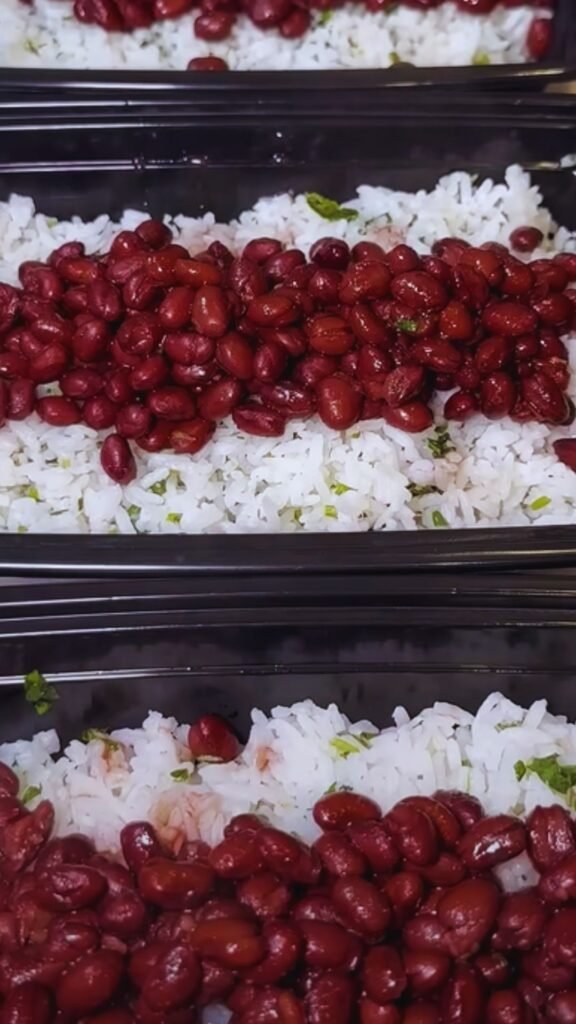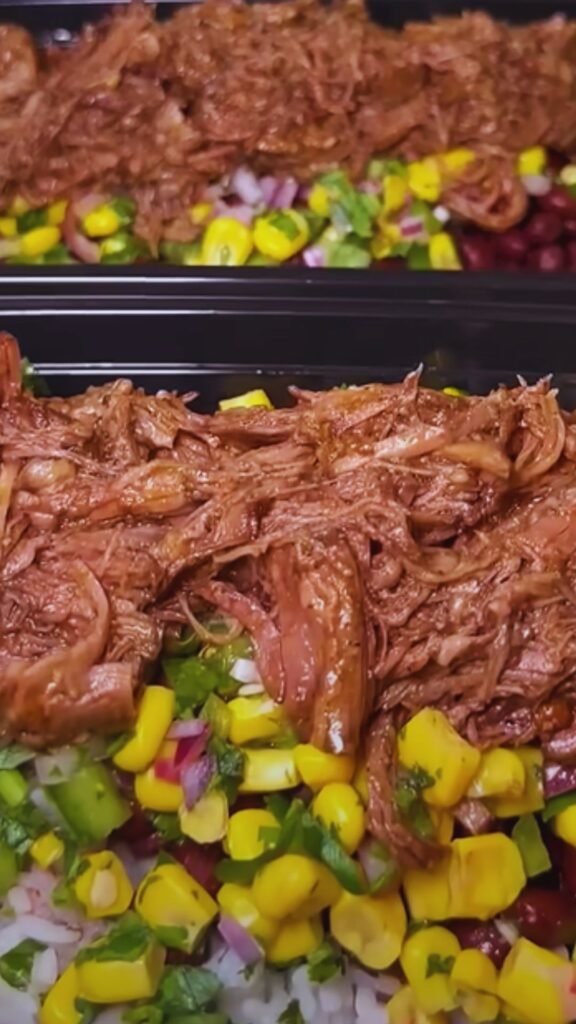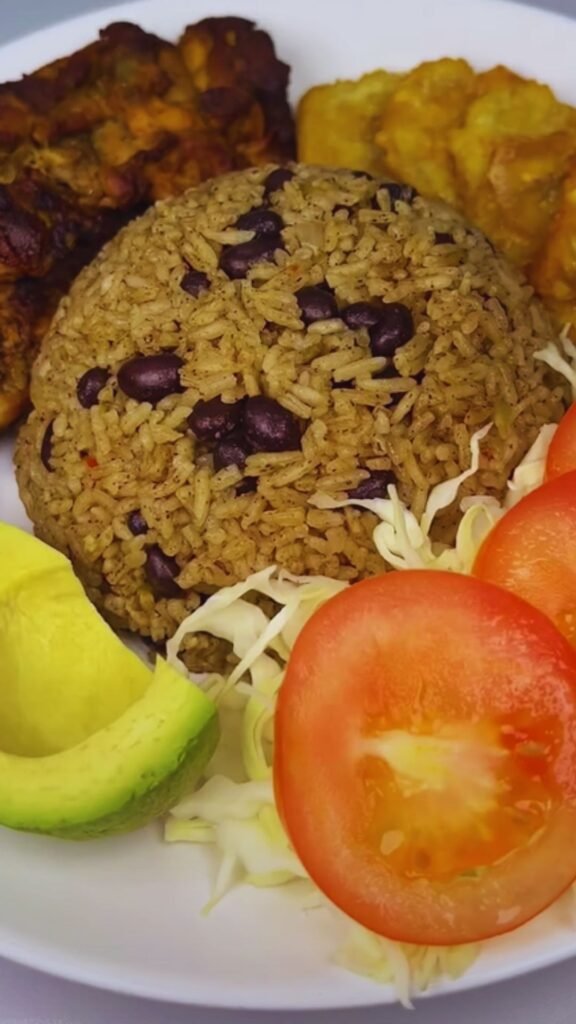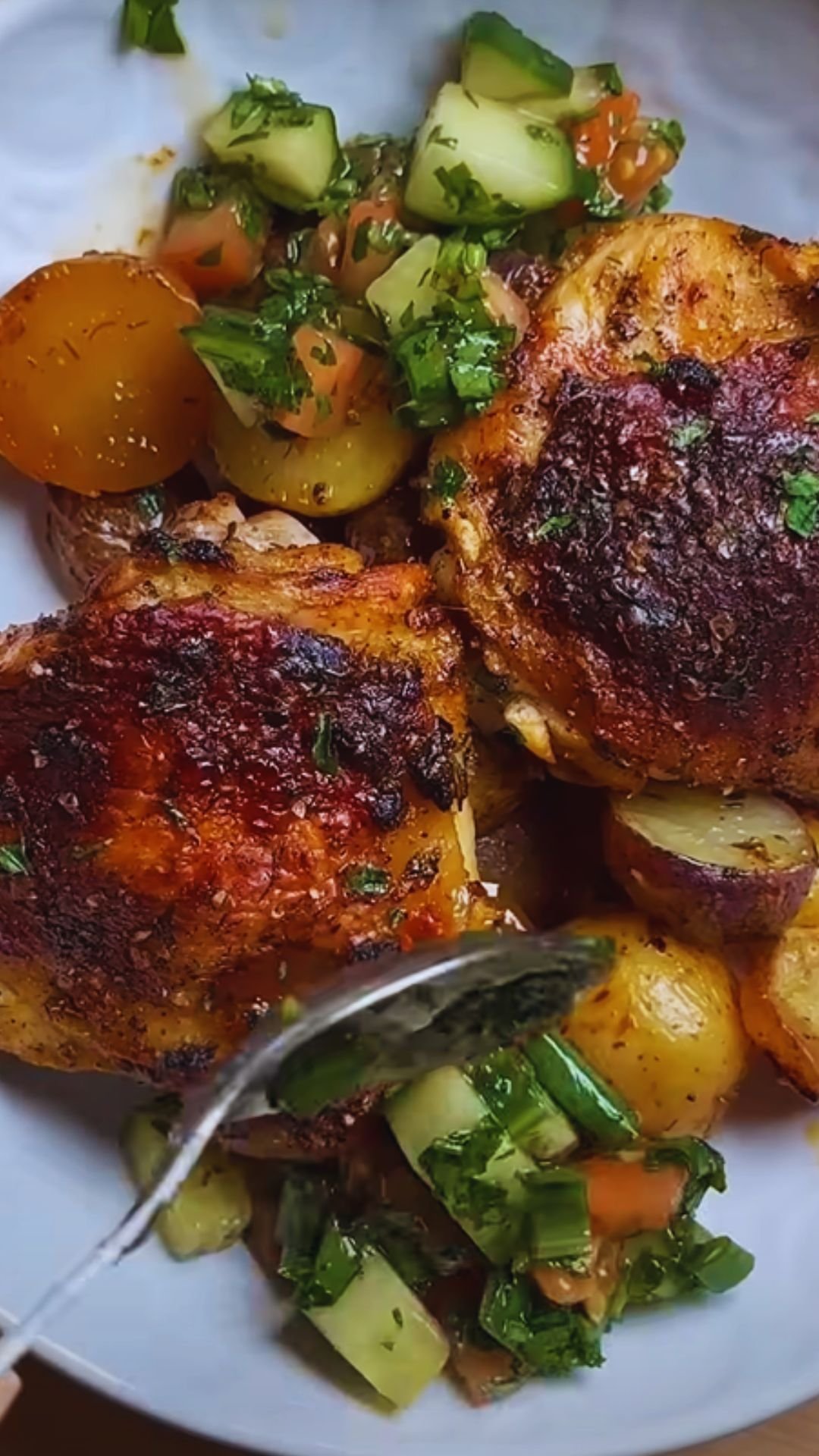There’s something deeply satisfying about a steaming bowl of black beans and rice. This humble dish transcends cultural boundaries, appearing in kitchens from the Caribbean to South America and across the United States. I’ve spent years perfecting my approach to this seemingly simple meal, discovering that within its basic ingredients lies a world of complex flavors and endless variations.
The History Behind the Bowl
Long before I ever cooked my first pot of black beans, this nutritional powerhouse was sustaining civilizations. Black beans (Phaseolus vulgaris) originated in the Americas, where indigenous peoples cultivated them alongside rice for thousands of years. These two ingredients formed the backbone of sustenance for many cultures.
The combination particularly flourished in Caribbean and Latin American cuisines. In Cuba, “Moros y Cristianos” (Moors and Christians) references the black beans and white rice representing the Moorish and Christian populations of Spain. Brazil has “feijoada,” while Costa Rica celebrates “gallo pinto” as a national dish.
I find it fascinating how this basic pairing crosses so many borders yet retains its essential character: nourishing, economical, and deeply flavorful.
Nutritional Powerhouse on Your Plate
Before diving into recipes, let’s appreciate what makes this combination so nutritionally sound. I’m always amazed by how complete this meal is despite its simplicity:
| Nutrient | Black Beans (1 cup cooked) | Brown Rice (1 cup cooked) | Combined % Daily Value* |
|---|---|---|---|
| Calories | 227 | 216 | 22% (based on 2000 cal diet) |
| Protein | 15.2g | 5g | 40% |
| Fiber | 15g | 3.5g | 66% |
| Iron | 3.6mg | 0.8mg | 24% |
| Magnesium | 120mg | 86mg | 49% |
| Potassium | 611mg | 173mg | 17% |
| Folate | 256μg | 8μg | 66% |
| Zinc | 1.9mg | 1.2mg | 28% |
*Percentages based on adult recommended daily values
When I serve black beans and rice to my family, I’m confident they’re getting a meal that:
- Creates a complete protein through complementary amino acids
- Provides sustained energy through complex carbohydrates
- Delivers essential minerals often lacking in Western diets
- Offers heart-healthy fiber that promotes digestive health
The combination is particularly valuable for plant-based diets, as it delivers protein comparable to many meat dishes without the saturated fat.
The Perfect Black Beans: Building Deep Flavor

After years of experimenting, I’ve learned that exceptional black beans require attention to detail. Let me share my foolproof method for beans that will transform your rice bowl.
From Dried vs. Canned: The Great Debate
I’ve used both canned and dried beans in my cooking journey and can confidently say:
- Dried beans: Offer superior texture and allow flavor infusion during cooking
- Canned beans: Provide convenience and still make a delicious meal
For the richest experience, I recommend dried beans when time permits. Here’s my method:
My Foolproof Black Bean Method
Ingredients:
- 1 pound dried black beans
- 2 tablespoons olive oil
- 1 large yellow onion, diced
- 1 green bell pepper, diced
- 4 cloves garlic, minced
- 1 tablespoon ground cumin
- 2 teaspoons dried oregano
- 1 bay leaf
- 1 tablespoon apple cider vinegar
- Salt and freshly ground black pepper
- 8 cups water or stock
- Optional: 1 ham hock or smoked turkey wing (omit for vegetarian)
Step-by-Step Process:
- Sort and soak: I examine the beans carefully, removing any stones or damaged beans. Then I soak them overnight in cold water. While some skip this step, I find it helps with even cooking and digestibility.
- Create the sofrito base: In a large heavy pot, I heat olive oil over medium heat. The onions go in first until translucent, about 5 minutes. Then I add bell pepper for another 3 minutes, and finally garlic for 1 minute, being careful not to let it burn.
- Add spices to bloom: This is crucial! I add cumin and oregano directly to the vegetable mixture and stir constantly for 30 seconds. This process, called blooming, releases essential oils in the spices that would otherwise remain locked away.
- Combine beans and liquid: After draining and rinsing the soaked beans, I add them to the pot along with water or stock (stock adds incredible depth). The bay leaf goes in now, along with the ham hock if using.
- The slow simmer: I bring everything to a boil, then reduce to a very gentle simmer, partially covering the pot. Depending on bean freshness, cooking takes 1-2 hours. I check occasionally, adding water if needed.
- Final seasoning: Only in the last 30 minutes do I add salt (adding it earlier can toughen the beans). The apple cider vinegar goes in during the final 10 minutes—it brightens all the flavors without tasting vinegary.
- Rest and develop: This might be my most important tip. If possible, I let the beans cool and refrigerate overnight. The flavors develop remarkably during this rest, creating beans that taste as if they’ve been cooking for days.
Quick Shortcut Method with Canned Beans
When time is short but I still crave those deep flavors, here’s my canned bean hack:
Ingredients:
- 2 cans (15 oz each) black beans, drained but liquid reserved
- 2 tablespoons olive oil
- 1 medium onion, finely diced
- 3 cloves garlic, minced
- 1 teaspoon ground cumin
- ½ teaspoon dried oregano
- 1 bay leaf
- 2 teaspoons apple cider vinegar
- Salt and pepper to taste
Shortcut Process:
- I sauté onions in olive oil until soft (about 4 minutes), then add garlic for another minute.
- The spices go in next, blooming for 30 seconds until fragrant.
- I add the drained beans, ¼ cup of the reserved liquid, and the bay leaf.
- After simmering for just 15-20 minutes, I finish with vinegar, salt, and pepper.
The result isn’t quite as profound as dried beans, but it’s remarkably good for a 30-minute investment.
Perfect Rice: More Than an Afterthought

Too often, rice is treated as a bland canvas for the beans. I’ve found that giving equal attention to the rice elevates the entire dish. Here’s my approach to rice that stands up proudly alongside those flavorful beans.
Rice Varieties Matter
Each type of rice brings different qualities to your bean bowl:
| Rice Type | Characteristics | Best For |
|---|---|---|
| Long-grain white | Separate, fluffy grains | Classic preparations, lighter dishes |
| Jasmine | Aromatic, slightly sticky | Adding subtle floral notes |
| Basmati | Extremely fragrant, stays separate | Lighter, more elegant versions |
| Brown rice (any variety) | Nutty, chewy texture | Higher fiber, more nutritious base |
| Black rice | Deep purple color, nutty flavor | Dramatic presentation, antioxidant boost |
| Coconut rice | Infused with coconut milk | Caribbean-inspired versions |
I typically choose long-grain rice for traditional preparations, but don’t hesitate to experiment based on what’s in your pantry.
Basic Rice Cooking Method
For perfect, separate grains every time:
- Rinse thoroughly: This removes excess starch that causes gumminess. I rinse until the water runs clear.
- Use the right ratio: For most white rice, I use 1 cup rice to 1½ cups liquid. Brown rice needs 2¼ cups liquid per cup of rice.
- Toast before adding liquid: For nutty depth, I sometimes toast the rice in a tablespoon of oil for 2-3 minutes before adding liquid.
- Bring to boil, then reduce immediately: Once boiling, I reduce heat to the lowest setting and cover tightly.
- Respect the timing: White rice typically needs 15-18 minutes; brown rice 35-40 minutes.
- Let it rest: After cooking, I remove from heat and let stand, covered, for 10 minutes. This allows moisture to distribute evenly.
- Fluff, don’t stir: I gently fluff with a fork rather than stirring, which would break grains and release starch.
Flavor-Boosted Rice Variations
To further elevate your rice game, try these enhancements:
Cuban-Inspired Yellow Rice
- Use chicken broth instead of water
- Add 1 teaspoon turmeric or annatto for golden color
- Include 1 bay leaf and a pinch of cumin
- Stir in 2 tablespoons olive oil before covering
Cilantro Lime Rice
- Cook rice as directed
- While fluffing, fold in:
- Zest and juice of 1 lime
- ¼ cup chopped fresh cilantro
- 1 tablespoon olive oil
- Salt to taste
Coconut Rice
- Replace half the cooking water with coconut milk
- Add a pinch of salt
- Finish with a squeeze of lime
Bringing It All Together: The Perfect Bowl
Now comes the moment of truth: combining these elements into a cohesive dish. The way you serve black beans and rice significantly impacts the final experience.
Serving Styles
There are three traditional approaches:
- Mixed together: Beans and rice combined during cooking (like Cuban “congri”)
- Beans over rice: The classic presentation with beans ladled over a bed of rice
- Side by side: Beans and rice sharing the plate but not mixed
I prefer the beans-over-rice method for daily meals. It allows each component to maintain its integrity while still melding flavors as you eat.
Essential Toppings and Garnishes
The right garnishes transform good black beans and rice into an unforgettable meal:
| Garnish | Adds |
|---|---|
| Fresh lime wedges | Brightness and acid balance |
| Diced avocado | Creamy richness and healthy fats |
| Chopped cilantro | Herbaceous freshness |
| Diced raw onion | Sharp contrast and crunch |
| Quick-pickled red onions | Tangy crunch and vibrant color |
| Crumbled queso fresco | Salty, milky notes |
| Sliced jalapeños | Heat and green freshness |
| Hot sauce | Customizable spice level |
| Toasted pumpkin seeds | Nutty crunch |
I typically offer several of these at the table, allowing each person to customize their bowl.
Five Essential Black Beans and Rice Variations

While the basic combination is satisfying, exploring regional variations opens new flavor dimensions. Here are five distinctive styles I’ve mastered:
1. Cuban-Style Moros y Cristianos
This style cooks the beans and rice together with a sofrito base:
Distinctive elements:
- Bacon or salt pork for smoky depth
- Bell pepper, onion, and garlic sofrito
- Bay leaf and oregano
- Splash of wine vinegar
The resulting dish has a striking black-and-white appearance that gives it its name.
2. Brazilian Feijão Com Arroz
The Brazilian approach keeps beans soupy and serves them alongside rice:
Distinctive elements:
- Orange or mandarins added during cooking
- Bay leaves and coriander
- Generous use of garlic
- Often includes diced beef or pork
- Farofa (toasted cassava flour) for garnish
3. Costa Rican Gallo Pinto
This breakfast variation uses leftover rice and beans:
Distinctive elements:
- Worcestershire sauce (locally called “Salsa Lizano”)
- Red bell peppers
- Cilantro
- Served with fried eggs and plantains
4. Caribbean Coconut Black Beans
This tropical variation incorporates rich coconut milk:
Distinctive elements:
- Coconut milk added to both beans and rice
- Scotch bonnet or habanero pepper for heat
- Thyme and allspice
- Often served with fried plantains
5. Southern U.S. Hoppin’ John Adaptation
Traditionally made with black-eyed peas, this Southern classic works beautifully with black beans:
Distinctive elements:
- Smoked ham hock or turkey wing
- Cajun seasoning
- Holy trinity (onion, celery, bell pepper)
- Hot sauce at the table
- Collard greens on the side
Complete Meal Planning
A bowl of black beans and rice can stand alone, but I often enhance it with complementary sides to create a complete meal experience.
Perfect Accompaniments
| Side Dish | Why It Works |
|---|---|
| Fried sweet plantains | Sweet contrast to savory beans |
| Tangy coleslaw | Crunchy, acidic counterpoint |
| Avocado salad | Creamy richness and freshness |
| Roasted vegetables | Caramelized notes and extra nutrition |
| Simple green salad | Light, fresh contrast |
| Corn tortillas | For scooping and making impromptu tacos |
| Cornbread | Southern-style complement, perfect for soaking up bean liquid |
Recommended Serving Suggestions
- Weeknight family meal: Black beans over yellow rice with avocado slices and lime wedges
- Weekend brunch: Gallo Pinto style with fried eggs and fresh fruit
- Dinner party: All five variations served tapas-style with multiple garnishes
- Lunch bowls: Pre-portion beans and rice with colorful toppings for grab-and-go meals
- Kids’ favorite: Mild beans and rice with cheese, served with baked tortilla chips for dipping
Storing, Freezing, and Repurposing
One of the greatest virtues of black beans and rice is its versatility beyond the first meal.
Storage Guidelines
| Component | Refrigerator | Freezer |
|---|---|---|
| Cooked black beans | 5 days | 6 months |
| Cooked rice | 4 days | 6 months |
| Combined dish | 3-4 days | 3 months |
Freezing Tips I’ve Learned the Hard Way
- Cool completely before freezing to prevent ice crystals
- Freeze beans in their liquid for moisture protection
- Freeze rice separately when possible
- Use freezer-safe containers and remove as much air as possible
- Thaw in refrigerator overnight for best texture
Creative Leftovers Transformation
Leftover black beans and rice need never be boring:
- Black bean soup: Blend beans with broth, add rice just before serving
- Burritos: Fill tortillas with beans and rice, add cheese, and grill
- Fritters: Mix and form into patties, dust with cornmeal, and pan-fry
- Stuffed peppers: Mix with corn and cheese, stuff into bell peppers and bake
- Breakfast hash: Fry with diced potatoes and top with fried eggs
- Bean dip: Purée beans with garlic and spices, serve with chips and rice on the side
Troubleshooting Common Issues
Even experienced cooks encounter challenges with black beans and rice. Here are solutions to the most common problems:
Bean Problems and Solutions
| Problem | Cause | Solution |
|---|---|---|
| Beans still hard after hours | Old beans, hard water, acidic ingredients added too early | Soak longer, use fresh beans, add acidic ingredients only after beans soften |
| Beans too mushy | Overcooked, too much stirring | Cook for less time, gentle simmer, minimal stirring |
| Beans bland | Under-seasoned, salt added too late | Create flavorful sofrito base, season properly in final 30 minutes |
| Bean skins separating | Rapid boiling, significant temperature changes | Maintain gentle simmer throughout cooking |
| Beans causing digestive issues | Natural compounds in beans | Soak thoroughly, discard soaking water, cook thoroughly, gradually increase bean consumption over time |
Rice Problems and Solutions
| Problem | Cause | Solution |
|---|---|---|
| Rice too sticky | Too much water, too much stirring, not rinsed | Use correct water ratio, avoid stirring, rinse thoroughly |
| Rice too hard/crunchy | Too little water, heat too high | Add a bit more water, lower heat, extend cooking time |
| Rice burned on bottom | Heat too high, pot too thin | Use heavy-bottomed pot, lower heat, ensure tight-fitting lid |
| Rice clumping | Not fluffed properly, left sitting too long | Fluff immediately after rest period, use fork not spoon |
Q&A: Your Black Beans and Rice Questions Answered
Over the years, I’ve fielded countless questions about this favorite dish. Here are answers to the most common inquiries:
Q: Are black beans and rice really a complete protein? While not technically complete in the strictest sense, the combination provides all essential amino acids your body needs when eaten together. The beans provide lysine (lacking in rice) while rice provides methionine and cysteine (lacking in beans).
Q: Do I really need to soak dried black beans? You can skip soaking, but I don’t recommend it. Soaking reduces cooking time by about 30%, helps beans cook more evenly, and may improve digestibility by removing some of the compounds that cause gas.
Q: How can I make black beans and rice more kid-friendly? Mild spicing, adding a bit of cheese on top, and serving with chips for scooping tends to win over younger palates. You can also blend some of the beans for a smoother texture while keeping some whole.
Q: What’s the best rice-to-bean ratio? I typically use 1 part cooked beans to 1 part cooked rice for a balanced meal, but you can adjust according to your protein preferences. More beans means more protein and fiber.
Q: Can I use a pressure cooker or Instant Pot? Absolutely! Unsoaked black beans cook in about 25-30 minutes in a pressure cooker. Use a natural release to prevent bean skins from bursting.
Q: Is this dish gluten-free? Yes, black beans and rice are naturally gluten-free. Just be careful with additional seasonings and garnishes, which may contain hidden gluten.
Q: How can I reduce the sodium in this dish? Cook dried beans without salt, use low-sodium broth, and add flavor through herbs, spices, and citrus rather than salt. Adding a splash of vinegar can make the dish taste well-seasoned with less salt.
Q: Why did my black beans turn my rice purple? This happens when the bean liquid mixes with the rice. It’s perfectly safe and actually indicates your beans are fresh and rich in anthocyanins, the beneficial antioxidant that gives them their color.
Final Thoughts: Simplicity and Satisfaction
After years of cooking and experimenting, I’ve come to see black beans and rice as more than just an economical meal option. This humble pairing represents culinary wisdom passed through generations—combining ingredients that together provide better nutrition than either could alone.
The beauty of black beans and rice lies in its dual nature: simple enough for everyday meals yet worthy of endless variation and exploration. It connects us to cultural traditions while allowing for personal expression.
Whether you’re cooking your first pot or your hundredth, approach it with attention to detail and respect for the ingredients. Your reward will be a dish that nourishes both body and soul—proof that extraordinary meals often come from the most ordinary components.
I hope this guide inspires you to explore the wonderful world of black beans and rice. From simple weeknight dinners to special gatherings, this versatile combination deserves a place in every cook’s repertoire.


